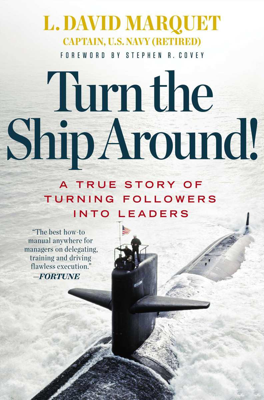“A New Ship”
Shift in Communication and Leadership
On January 29, 1999, aboard the USS Santa Fe en route to Pearl Harbor, David Marquet reflects on the leadership and communication shortcomings during an inspection. Despite recent successes, Marquet identifies a need for a transformative approach in communication to empower his crew more effectively.
Insight on Formal vs. Informal Communication
- Excessive Reliance on Formal Communication: The crew adhered strictly to formal communication protocols, which, while reducing confusion (e.g., specific terms like shut instead of close), limited the valuable informal communication that provides context and fosters team performance.
Introduction of "Thinking Out Loud"
- Encouraging Informal Communication: To counteract the rigid formal communication, Marquet introduces a mechanism called Thinking Out Loud, intended to promote open sharing of thoughts, assumptions, and uncertainties among crew members.
- Enhanced Decision-Making: By encouraging officers and crew to vocalize their thought processes, especially in situations of uncertainty, the goal was to maintain initiative and control at individual levels, thus enhancing job satisfaction and decision-making quality.
Cultural Resistance and Implementation
- Cultural Bias Against Informal Communication: There was a notable reluctance within the military structure to share unverified information or personal hunches, reflecting a broader cultural bias against open, speculative communication.
- Efforts to Ingrain New Practices: Despite organizational resistance, efforts were made to ingrain these new communication practices into the crew to enhance teamwork and adaptability.
Inspection Outcomes and Reaffirmation
Following the inspection, Commodore Mark Kenny delivered positive feedback, indicating that the USS Santa Fe had earned an "above average" rating, reflecting notable improvements and the potential of new initiatives.
Success Indicators
- Positive Feedback on Cultural Shifts: The crew's proactive engagement and welcoming behavior during the inspection were highlighted as key indicators of positive cultural changes on the Santa Fe.
- Impact of New Practices: Initiatives like the "three-name rule" and "I intend to..." had begun reshaping the ship's operational culture, contributing to the favorable assessment.
Strategic Implementation of "Think Out Loud"
- Mechanism for Control: By knowing what his watch officers were thinking, Marquet could restrain from intervening, allowing them to execute their plans effectively.
- Organizational Clarity: This practice also served as a tool for enhancing organizational clarity, encouraging a shared understanding of goals and challenges in the complex operational environment of a submarine.
Reflective Questions on Communication and Leadership
At the end of the chapter, Marquet presents several questions to encourage leaders to evaluate the communication dynamics within their organization:
- Consideration of informal language usage and its impact on team dynamics.
- Comfort levels within the organization for discussing uncertainties and innovative ideas.
- The role of trust in fostering an open communication environment.
Through these reflections and initiatives, Marquet aimed to transform the Santa Fe into a more resilient and dynamically responsive team, moving away from traditional hierarchical constraints.
